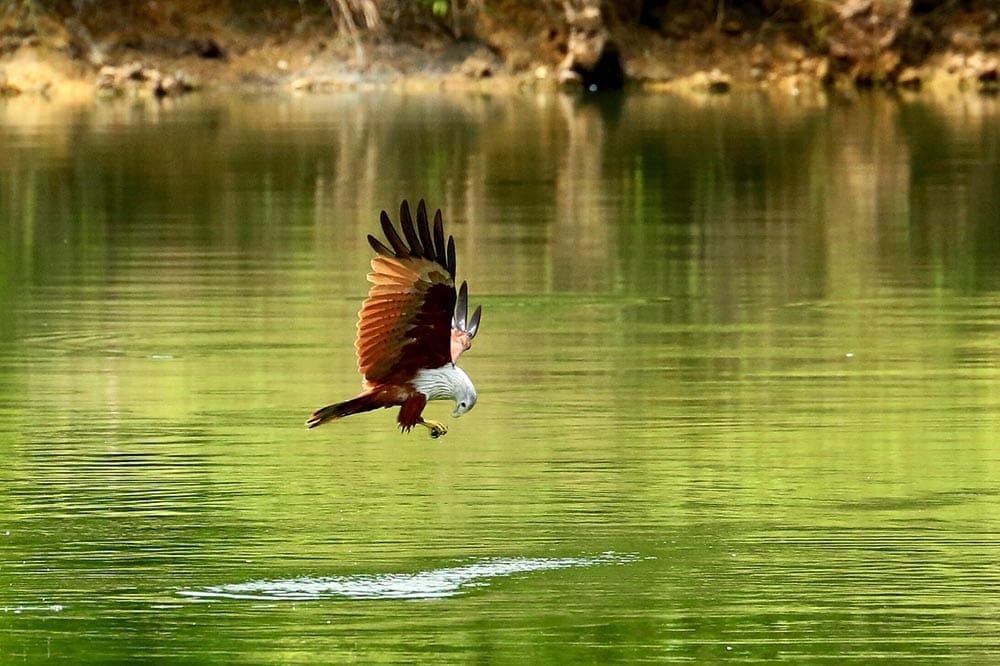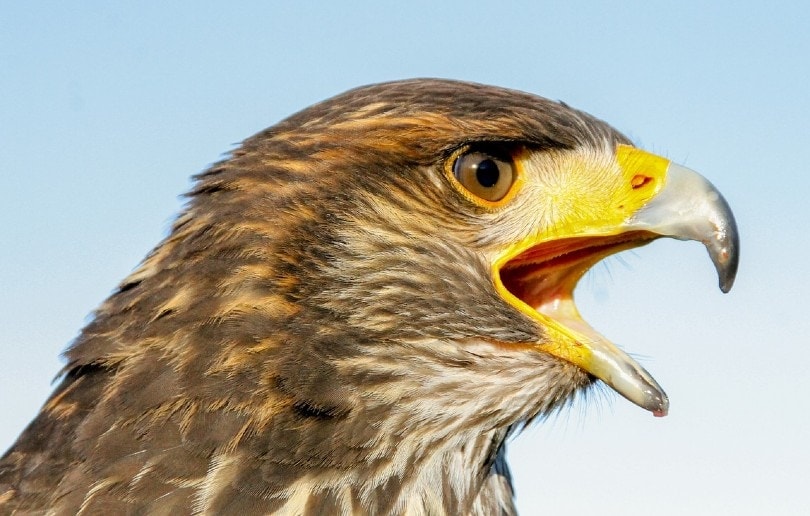Do Hawks Hunt at Night? Are They Nocturnal?
Last Updated on

With over 200 species of hawks soaring around the world, it’s easy to notice their vast differences. Colors, feather patterns, and habitats are a few of the things that make these birds of prey different from one another. You’ll also discover that each species has different preferences when it comes to its main source of food. But what about their hunting habits? When do hawks hunt? Are they nocturnal creatures?
While most people instantly expect hawks to be nighttime predators, the answer to this question is no. All species of hawk, each one, does their hunting during the day. Although a few prefer to hunt at dusk, this still isn’t considered nighttime. Every species of hawk spends their days scouring the ground from high above in search of their next meal then returns to the nest at night for rest.

The Eyes Have It
Now that you know hawks aren’t nocturnal predators, you may be asking yourself why? There are a few reasons these birds of prey prefer the day and evening skies. Let’s take a look at them and try to understand the hunting habits of these beautiful birds and why the nightlife isn’t for them.
The main reason hawks hunt during the day is their vision. Like other diurnal animals, hawks don’t have great night vision. Their poor navigation in the dark makes it hard for them to see the small mammals they hunt for food. This is why hawks prefer hunting at dusk. Many of the animals they prey upon are nocturnal. Hawks choose the perfect time between daylight and nighttime to encounter these animals as they scurry out from their daytime hideaways and burrows.

The Hunting Habits of the Hawk
While hawks may have poor night vision, this doesn’t affect their ability to see during daylight hours. Their keen sight and incredible hunting skills are why they are considered one of the most skilled predatorial birds. Hawks have several techniques under their wings when it comes to hunting. Let’s take a look at a few of them.
Gliding from Above
The most common way a hawk catches prey is by using their gliding as an advantage. These birds are practically motionless as they glide in search of prey. At the high altitudes where they soar, they can easily spot prey below. Thanks to their effortless gliding, hawks can easily swoop in and snatch up small mammals without being detected.

Perching
Another technique hawks use when hunting is perching. This is where they choose a location in a tall tree or on top of a pole and wait. Without movement, most small mammals like squirrels, mice, or rabbits will never know the hawk is there. When the hawk feels the time is right and their prey is most vulnerable, they will swoop in for the kill.
Going In for the Kill
Once a hawk swoops in for the kill, it isn’t their beak they use to control their prey like many other birds, it’s their talons. The technique they use is determined by the size of the prey they are attacking. With smaller mammals, hawks wrap their talons tightly around and squeeze until their prey is suffocated. If the animal is larger, its 2 longest talons are used to tear into the victim until the wounds are too much to recover from.

Do Hawks Hunt in Groups?
Hawks are solitary creatures unless it is time for mating or migration. This daytime predator is deadly enough on its own and doesn’t need the assistance of other hawks to complete a successful hunt. This allows hawks to hunt in their own territories without the worries of sharing their prey after a good hunt.
You will find one exception to this rule, however, the Harris Hawk. These hawks are known to be quite social. It isn’t uncommon to find pairs of them living together. They will even live in large flocks with at least 7 members. This hawk species makes the most of each group member’s abilities to ensure each hunt they work on together is results in food for the flock.

In Conclusion
As you can see, hawks are amazing hunters who use their keen eyesight, flying ability, and talons to find prey for their survival. While their eyes aren’t made for hunting at night, they are still considered one of the fiercest and most respected predatorial birds in the world. Seeing them soaring through the evening sky at dusk is their way of catching themselves a little nighttime snack before they turn in for the evening. Perhaps they are more like us than we realized.
Featured Image Credit: Pixabay
About the Author Robert Sparks
Robert’s obsession with all things optical started early in life, when his optician father would bring home prototypes for Robert to play with. Nowadays, Robert is dedicated to helping others find the right optics for their needs. His hobbies include astronomy, astrophysics, and model building. Originally from Newark, NJ, he resides in Santa Fe, New Mexico, where the nighttime skies are filled with glittering stars.
Related Articles:
How to Clean a Refractor Telescope: Step-by-Step Guide
How to Clean a Telescope Eyepiece: Step-by-Step Guide
How to Clean a Rifle Scope: 8 Expert Tips
Monocular vs Telescope: Differences Explained (With Pictures)
What Is a Monocular Used For? 8 Common Functions
How to Clean a Telescope Mirror: 8 Expert Tips
Brightfield vs Phase Contrast Microscopy: The Differences Explained
SkyCamHD Drone Review: Pros, Cons, FAQ, & Verdict
